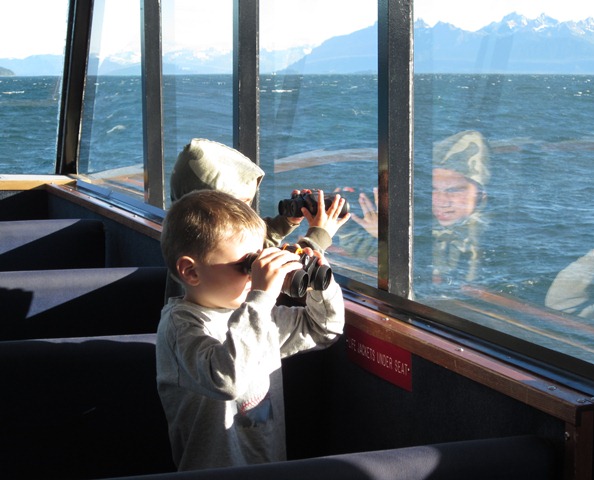Yesterday I went to work on the Baranof Wind, the vessel that operates a day tour up to see some of the
park's glaciers. As I was making my morning rounds introducing myself I met four bright-eyed children who
were excited by the prospect of becoming official junior rangers of Glacier Bay National Park and Preserve.
Throughout the day these junior rangers-in-training inspired me with their enthusiasm. They diligently noted
natural sounds in their workbooks, walked around the boat showing pictures of commonly observed birds to
other visitors, and shared their favorite sightings from our trip together.Highlights included a tail-lobbing
humpback whale, the Johns Hopkins glacier, and harbor seals hauled out on ice. The best part of our
interaction came later in the day.
After the main glacier and wildlife viewing of the day had ended the children and I settled in to have a deeper
discussion about the roles of the National Park Service, park rangers, and junior rangers in preserving
natural and cultural heritage. They easily understood the term preservation and why it is important. These
sharp youths also instantly recognized the ways they could contribute. After I told them that a huge
responsibility of being a junior ranger is teaching others about the amazing things they have learned I asked
them how they could do that when they go home. All of their hands quickly shot into the air and they offered
suggestions ranging from telling their friends and families to asking their teachers to talk about national parks
in the classroom.
I am often deeply impressed by children's capability of seemingly instantaneous integration of new information.
This is something that can get lost along the way to adulthood. I present a program about Bianca the
Adventurous Barnacle for youth. In the beginning they get to guess what animal my story will be about. I give
them the following clues: this animal lives in the intertidal zone, it is an invertebrate, and it is a sessile animal
(meaning it does not move from one spot during the adult phase of its life). None of these are simple
concepts and for many of the children they are completely new ideas. Regardless there is often a kid who will
guess that the story is about a barnacle. The small group of junior rangers from yesterday was no exception.
Kids are capable of almost instantly connecting with the world around them. They see the world more clearly
than we who have had more time to accumulate experiences to filter our views through. The parents of the
junior rangers I interacted with thanked me for spending my time with their children. I realize that to be able to
see through the eyes of a child is a precious gift. These are the future generations that I and my fellow
rangers are working to preserve places like Glacier Bay for.
|
August 18, 2013
|
Last updated: December 26, 2019

